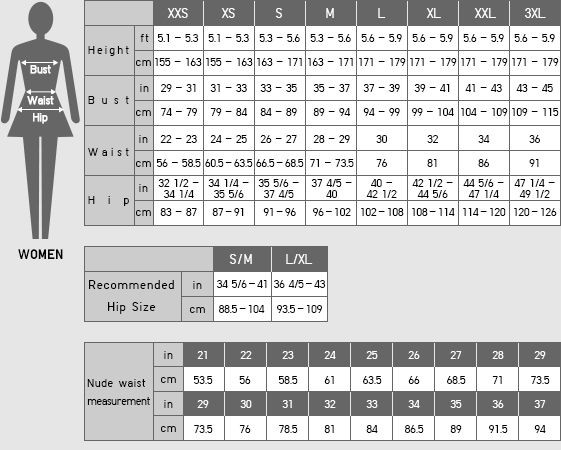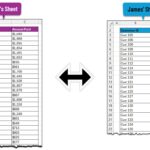Navigating clothing sizes internationally can be a real challenge, especially if you often find yourself between sizes or dealing with varying body proportions. For petite individuals, or those accustomed to Asian sizing, shopping in US stores can sometimes feel like a constant search for the right fit. This is particularly true even with brands that offer petite lines, where styles and cuts might still not align with your preferences.
During a trip to Japan, the prospect of shopping at familiar brands like UNIQLO and Muji held a particular appeal. Knowing these brands often tailor their collections for Asian markets, the hope was that the Japanese sizing would offer a better fit compared to the US counterparts. Despite being a fan of UNIQLO in the US and typically opting for the smallest sizes available, the fit often felt off – lengths were frequently too long in the torso or legs. This experience was disappointing, especially given the expectation that a Japanese brand would naturally cater to Asian body types.
Prior to the trip, online research for a detailed comparison of UNIQLO sizing between the US and Japan proved surprisingly sparse, with limited information on size availability in both markets. This gap in information motivated this article, born from personal experience, to guide those planning a shopping trip to Japan or Asia, especially if UNIQLO is on your list.
Quick Takeaway:
- Generally, UNIQLO sizing in Japan runs about one size smaller than in the US.
- Japanese UNIQLO garments are designed with a shorter overall cut compared to their US counterparts.
Let’s delve deeper into the specifics by examining the sizing charts and a direct comparison.
Understanding UNIQLO US Sizing
Focusing on the smallest sizes, as these are most relevant for this comparison, the US UNIQLO size chart indicates the following for women:
Height
- US XXS: 5’1” – 5’3” (5.1-5.3 ft)
- US XS: 5’1” – 5’3” (5.1-5.3 ft)
Bust
- US XXS: 29-31 inches
- US XS: 31-33 inches
Waist
- US XXS: 22-23 inches
- US XS: 24-25 inches
It’s worth noting that finding XXS sizes in US UNIQLO stores, even in major cities like New York City, is rare. This size is occasionally available online as part of their extended size range.
Exploring UNIQLO Japan Sizing
Here’s where the sizing differences become apparent. The Japanese UNIQLO size chart does not include an XXS size; XS is the smallest available. Let’s compare the US XXS and XS to the Japanese XS and S, rounding centimeter measurements to the nearest inch for easier comparison.
Height
- US XXS: 5’1” – 5’3” (5.1-5.3 ft)
- US XS: 5’1” – 5’3” (5.1-5.3 ft)
- JP XS: 4’9” – 5’1” (4.9-5.1 ft)
- JP S: 5’0” – 5’3” (5.0-5.3 ft)
Noticeably, the Japanese XS is designed for a shorter height range than the US XS. While the US XS and Japanese S appear similar in height range on paper, the JP S accommodates women as short as 5 feet, an inch shorter than the US XS. This initial height difference hints at a generally shorter cut in Japanese sizing.
Bust
- US XXS: 29-31 inches
- US XS: 31-33 inches
- JP XS: 29-31.5 inches
- JP S: 30-33 inches
In terms of bust measurements, the US XXS and Japanese XS are quite similar, while the US XS and Japanese S again show overlap. However, the JP S range starts slightly smaller, accommodating busts from 30 inches.
Waist
- US XXS: 22-23 inches
- US XS: 24-25 inches
- JP XS: 22-25 inches
- JP S: 24-26 inches
Interestingly, the US XXS waist measurement is smaller than the Japanese XS, while the US XS caters to a slightly smaller maximum waist size (25 inches) compared to the Japanese S (26 inches).
One observation from shopping in Japanese UNIQLO stores mirrors the US experience: smaller sizes like XS are often less stocked. You’re more likely to find S, M, and L sizes readily available on the racks.
Decoding the Size Charts: US vs. Japan UNIQLO
The size charts suggest that a Japanese S should theoretically fit someone with similar height, bust, and waist measurements as a US XS. This can be confusing because personal experience often tells a different story. Trying on US UNIQLO XS sizes often resulted in a fit that felt too large, while Japanese UNIQLO S sizes seemed to fit much better.
This discrepancy raises a valid question: Is it possible to be mistaken, and perhaps the perception of a better fit in Japan is simply due to the novelty of shopping abroad? To address this, a direct side-by-side comparison was conducted.
Side-by-Side Size Showdown: UNIQLO Shirt – Japan S vs. US XS
To objectively compare the sizing, an experiment was conducted, comparing the same style of shirt purchased in Japan in size Small versus a US purchased shirt in size Extra Small.
An interesting aside: pricing differs between the two countries. The Japanese UNIQLO shirt was priced under $20 USD equivalent, while the same shirt in the US retailed for nearly $30 USD.
The US XS shirt was laid flat, and the Japan S shirt was placed directly on top, aligning the collars, shoulders, sleeves, and body.
The visual comparison clearly demonstrates that the Japanese S shirt has sleeves and a hem that are at least an inch shorter than the US XS version. The width of the body, however, appeared to be quite similar.
The experiment confirms that despite similar measurements in height, bust, and waist ranges according to the size charts, Japanese UNIQLO sizing features a shorter cut in both sleeve and overall shirt length. This difference in cut is the key reason why Japanese sizes often provide a more flattering fit for petite individuals compared to US sizes.
UNIQLO Pants and Jeans Sizing Considerations
For pants and jeans, the trend of shorter and slimmer cuts in Japanese sizing continues. While US XS and Japanese S pants are theoretically designed for similar height ranges, Japanese S pants tend to be cut shorter and with a slimmer fit through the hips and seat. Again, size charts may suggest similar size ranges, but the practical fit leans towards a slimmer silhouette in Japanese sizes, likely catering to slightly shorter individuals with smaller hip measurements compared to the US XS demographic.
In jeans, personal experience revealed needing a size 22 (56 cm) in Japanese UNIQLO. In contrast, US UNIQLO stores rarely stock sizes smaller than 25. Interestingly, size 24 jeans in Japan felt significantly too large, prompting the question of vanity sizing. It’s possible that Japanese pants sizing might be less generous compared to US sizing, but further investigation would be needed to confirm this.
Bonus Shopping Tips for UNIQLO in Japan
For the most extensive UNIQLO product selection, a visit to UNIQLO Tokyo’s Ginza flagship store is highly recommended. This global flagship boasts 12 floors, each dedicated to different product lines, including best-selling items, special collaborations, and dedicated floors for women’s, men’s, and children’s clothing. The Ginza store generally offers the widest range of sizes and colors, often stocking items that are sold out in other locations.
Tourists can also benefit from tax-free shopping at UNIQLO in Japan on purchases exceeding 5000 JPY. Depending on the store location, tax-free processing may be available at dedicated cashiers or any register.
Happy shopping in Japan! Hopefully, this guide clarifies the sizing differences between US and Japanese UNIQLO, helping you find the perfect fit.

